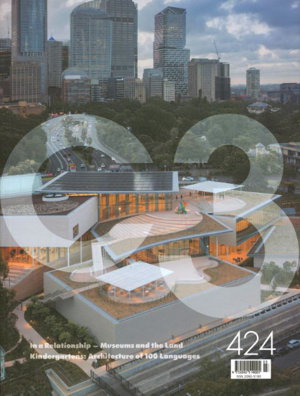| Wed | 9am – 5:30pm |
| Thu | 9am – 5:30pm |
| Fri | 9am – 5:30pm |
| Sat | 10am – 5pm |
| Sun | 12pm – 4pm |
| Mon | 9am – 5:30pm |
| Tue | 9am – 5:30pm |
Ask our staff anything about our shop or products, or share your feedback.
The relationship between museum buildings and the land has historically been a disconnect, but recent museum architecture designs have started to incorporate the natural aspects of the land into their designs. This section surveys four new museums that incorporate natural elements in their design.
It examines how the elements of the land have shaped, inspired, or been woven into their design, each in different ways. It considers whether these designs relate to the museum's contemporary needs and the urgent and overdue agenda of sustainability. The Reggio Emilia method of early years education, founded by Loris Malaguzzi in post-war Italy, has had a global influence on kindergartens. The Kindergarten Bamb in Chile, designed with this method in mind, creates intermediary spaces that encourage exploration and discovery. The Engelbach Kindergarten in Austria has transitional terrace spaces that dialogue with the external play area, creating ideal conditions for exploration and fun. Materials contribute to positive formative experiences, with natural materials reducing exposure to pollutants, contributing to ecological sustainability, and generating familiarity through texture. Climate-based concerns also dominate these projects, with architects ensuring a continuation between the interior classrooms and the external natural world to develop a positive relationship to nature.


